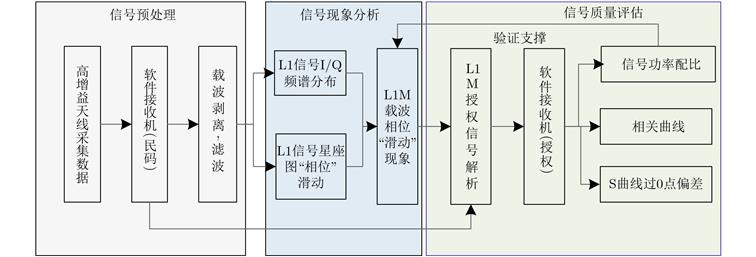| GPS III首星信号结构及其特性分析 |
| |
| 引用本文: | 卢晓春, 王萌, 王雪, 饶永南. GPS III首星信号结构及其特性分析[J]. 电子与信息学报, 2021, 43(8): 2317-2323. doi: 10.11999/JEIT200534 |
| |
| 作者姓名: | 卢晓春 王萌 王雪 饶永南 |
| |
| 作者单位: | 1.中国科学院国家授时中心 西安 710600;;2.中国科学院大学天文与空间科学学院 北京 101407;;3.中国科学院大学电子电气与通信工程学院 北京 101407 |
| |
| 摘 要: | 
导航信号是连接空间卫星和地面用户端的枢纽,是卫星导航定位系统中最重要的部分之一,其优劣直接影响后续的定位、测速、授时等性能。该文利用国家授时中心40 m高增益天线对GPS III首星进行多次信号采集及比对分析工作,从GPS III L1频点调制矢量及频谱分布入手,对L1频点载波相位存在“滑动”现象进行了深入剖析,得出该现象主要源于L1M信号。利用C/A码解析出授权信号M码,定量分析了L1频点信号分量的S曲线过0点偏差以及功率占比,其中L1M S曲线过0点偏差达到0.058 ns,信号功率占比最高可达6.78。该文研究成果可为研究新一代GPS信号的调制方式提供支撑,也可为后续北斗导航卫星系统信号体制设计以及信号质量评估方法提供参考。
|
| 关 键 词: | GPS III 导航信号 信号结构 信号解析 信号评估 |
| 收稿时间: | 2020-07-01 |
| 修稿时间: | 2020-12-21 |
|
| 点击此处可从《电子与信息学报》浏览原始摘要信息 |
|
点击此处可从《电子与信息学报》下载免费的PDF全文 |
|

